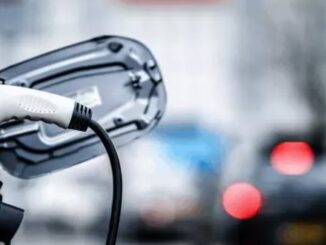
As more fleets convert to electric vehicles, infrastructures and internal systems must be digitized and energy needs to include sustainable resources. Don Wingate, vice president of utility and microgrid solutions North America operations at Schneider Electric, discusses what digitization and electrification mean for fleets and where microgrids fit into the evolution.

While automotive manufacturers are looking to electrify the transportation sector, and businesses and municipalities are looking to electrify their fleets, they have found the transition from gas- and diesel-powered vehicles to electric vehicles (EVs) can often feel daunting. They understand that the path to sustainability starts with electrification and ends with net-zero — or even climate positive — results, but they aren’t sure if it’s feasible, or where to begin.
Before picking out vehicles and installing chargers, it’s critical to assess the existing infrastructure, coordinate with utilities, consider maintenance and a technical refresh, secure funding, address uncertainties and align the project with environmental, social and governance goals. Top that with integrating an all-in-one platform, comprehensive dashboarding and cybersecure systems to manage those fleets. While this may sound challenging, there are experts that can consult and guide those who want to electrify their fleets.
Microgrid feasibility — determining if a site can become or support a microgrid
The first step is to consider the power generation options available to and compatible with the current and future infrastructure. What is in place today is likely not sufficient for the end goal. Microgrids offer a promising, effective and scalable tool to support electric fleets. Each microgrid will integrate the outcomes of resilience, sustainability and financial savings for a project — unique to each customer. A feasibility study by a qualified team can determine the benefits and challenges a microgrid project might encounter or a system might face during procurement.
Don’t be too eager to install a microgrid just yet, as the process can yield either a positive or negative feasibility answer. The accuracy of the assessment is crucial to saving time, energy and financial resources ahead of microgrid adoption.
When determining if a site is compatible for a microgrid, there must be an evaluation and load estimation as part of an energy analysis. This includes sizing on-site distributed generation and battery storage assets and evaluating electrical loads to determine if a site can handle the specific outcomes proposed. It is possible for the site to be missing some of the electrical infrastructure requirements for a feasible microgrid. If a site is only partially acceptable, a team will need to determine the changes required to existing infrastructure to implement a microgrid.
Once a site has been vetted and validated for microgrid construction, the next step is evaluating the necessary protection and metering systems. If a site is already established, specialists will need to assess existing control systems for compatibility with new microgrid controllers and create a preliminary sequence of operations.
Consulting services make it easy — managing the end-to-end microgrid journey from initial consultation through design and procurement to installation, operation and maintenance.
As an islandable energy resource — meaning it can disconnect from the traditional grid and operate autonomously — microgrids and EVs pose an opportunity for innovation beyond fleet conversion. If integrated successfully, microgrids have the potential to operate as a critical piece in the net-zero puzzle, resulting in not only savings and income but also environmental justice and sustainability.
Benefits of an electric fleet powered by microgrids
Microgrids in combination with electric vehicles can be instrumental in facilitating a net-zero future. To support the uptick in EV fleets and infrastructure, the grid is going to have to get more intelligent and distributed — this is mutually beneficial. Adding behind-the-meter microgrids that produce sustainable and resilient energy is a valuable part of developing the new energy landscape. The trend of upgrading fleets to EVs forces updates to electrical systems while influencing updates to both the traditional grid and the distributed grid — all necessary to make it easier to upgrade fleets. New technologies, like microgrids, make charging infrastructure easier to install and simultaneously curtails the logistics for charging stations.
Microgrids designed as a local grid also have the potential to function as a two-way street, with stationary EVs acting as a fleet of batteries ready to be tapped. This creates a loop between supply and demand under the concept of vehicle-to-grid, or V2G. The prevention of wasted electricity through grid storage of surplus energy establishes a productive cycling of energy between the grid and transportation wherever it’s needed. In the event of a blackout, an additional benefit of microgrids is that they can keep public transport and critical sectors up and running. Cities can use the “beehive approach” to make the most of microgrids — where fleets are utilized as mobile microgrids in extreme weather and blackout events while regulating energy consumption during “fair weather” periods.
While there are myriad benefits to microgrids, many steps must still be considered before fully committing. When feasibility is a match, microgrids can serve as a renewable energy source that cuts the carbon footprint in more ways than one, offering resilience and sustainability beyond electric vehicles and toward net zero. With the right consultation and support, implementing an electrification strategy, setting up EV fleets and installing a microgrid is simplified, and the path is cleared for a more sustainable future.
Don Wingate is vice president of utility and microgrid solutions North America operations at Schneider Electric.
Source: Microgridknowledge.com



